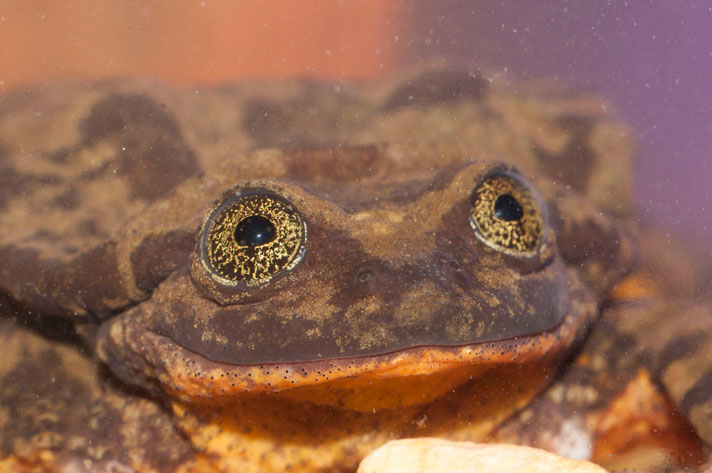Sehuencas water frogs are fully aquatic frogs that at one point were found in abundance in ponds, rivers and streams of montane cloud forests in Bolivia, Ecuador, and Peru.
Romeo, a Sehuencas water frog (Telmatobius yuracare) has been in captivity for more than 10 years and is the last known frog of his species. The frog, who made headlines earlier this year when he was featured on Match.com, where he was looking for a mate, is going to, hopefully, get another chance, as Global Wildlife Conservation and the Museo de Historia Natural Alcide d’Orbigny, are launching field expeditions this month in Bolivia, with the hope of finding a mate in the wild.

Matias Careaga,Museo de Historia Natural Alcide d’Orbigny
Sehuencas water frogs are fully aquatic frogs that at one point were found in abundance in ponds, rivers and streams of montane cloud forests in Bolivia, Ecuador, and Peru.
Romeo, The Last Frog Of His Species Seeks Mate Through Match.com
“We’ll be walking inside the rivers where Sehuencas Water Frogs were once common, turning over rocks and looking for frogs on the bottom of the river,” Teresa Camacho Badani, head of herpetology at the Museo de Historia Natural Alcide d’Orbigny in Cochabamba told Global Wildlife Conservation. “We used to find six or seven at a time. They’re hard to spot if you’ve never seen one before in the wild, but I’m hoping to find as many individuals as we did during our field trips more than 10 years ago.”
The team tasked with trying to locate a mate for Romeo will embark on two trips each month until the end of February. The trip will include two biologists and a veterinarian. This time of year is the rainy season in Bolivia and it is hoped that looking now will further enhance the chance of finding a mate for Romeo. The team will also look for two other frog species that have seemingly disappeared: Telmatobius sibiricus and Telmatobius edaphonastes.
“Thanks to all of the generous donors—and true romantics—who gave money this past Valentine’s Day to support these expeditions, we have a real shot of saving this species,” said Chris Jordan, GWC’s Central America and Tropical Andes coordinator. “At GWC we’re all about giving the under-frog a chance. Romeo hasn’t given up hope, his fans haven’t given up hope, and neither have we.”
Sehuencas water frogs are fully aquatic frogs that at one point were found in abundance in ponds, rivers and streams of montane cloud forests in Bolivia, Ecuador, and Peru. The frog has suffered due to a combination of the chytrid fungus, climate change, habitat destruction, and the introduction of non-native trout to the frog's aquatic habitat.



